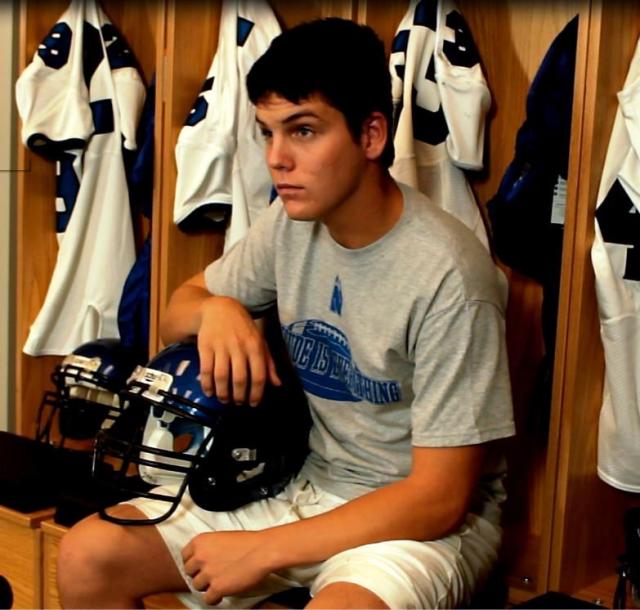Pillar Two: Protection (Minimizing Risk)
While the risk of concussion and brain trauma from the cumulative effects of low-grade (e.g. sub-concussive) hits in football cannot be completely eliminated, there are at least seven steps that can be taken to minimize the risk of brain injury from playing contact and collision sports:
1. Requiring comprehensive sports physicals: All athletes should undergo a pre-participation physical evaluation (PPE) before every season to identify those who, because of a history of concussions (all brain injuries, not just those sustained during sports) or other pre-existing medical conditions - such as chronic migraines, ADHD, learning disabilities, or sleep disorders - should be advised against playing contact or collision sports or to consider retirement from such sports (Pillar Six);
2. Ensuring that players wear properly fitted helmets: Football helmets need to fit properly before the season[24], and proper fit must be maintained over the course of the season (especially important for newer helmets with air-bladder systems, because helmet fit may be compromised, either because air leaks from the bladder or because players intentionally let the air out for comfort). After the season, helmets must be properly reconditioned, or replaced if they have reached the end of their useful life.
Three important caveats about protective equipment:
- Although biomechanical studies have shown that helmets, and other protective equipment, may reduc
 e impact forces to the brain, there is no evidence that such equipment reduces, much less prevents concussion, nor is there data to say one type of helmet is superior to another kind of helmet in preventing concussions (indeed, several studies and a recent research paper suggest that older helmets, as long as they have been properly reconditioned, do just as good a job of protecting against concussion as new helmets); [1,10, 16]
e impact forces to the brain, there is no evidence that such equipment reduces, much less prevents concussion, nor is there data to say one type of helmet is superior to another kind of helmet in preventing concussions (indeed, several studies and a recent research paper suggest that older helmets, as long as they have been properly reconditioned, do just as good a job of protecting against concussion as new helmets); [1,10, 16]
- While there is thus no evidence that a properly fitted helmet reduces concussion risk, evidence suggests that an improperly fitted helmet can increase risk of concussion, especially if the helmet comes off during play (one of the two concussions suffered by Newcastle players during the 2012 season during the filming of The Smartest Team occurred after an opposing player intentionally shoved his helmet off)
- There continues to be no compelling evidence that mouth guards protect athletes from concussion, [1,10] but they nevertheless an important piece of safety equipment because of their role in preventing dental and orofacial injuries.
- All football players, regardless of position, need to learn how to tackle properly (e.g. in a way that minimizes helmet-to-helmet contact):
- Players on the offensive and defensive line should learn how to avoid using their helmets as the initial point of contact with opponents on the line of scrimmage. Despite being technically illegal since 1976 and a point of emphasis in recent years in rules enforcement at the high school level, such helmet-to-helmet contact continues to be a widespread practice during line play, with players being rarely penalized; and
- Players should keep their heads up, aware of their surroundings so that, when they see a hit coming, they can brace for the blow. A study of hockey players [17] shows that bracing for a body blow reduces of the risk of concussion.
How important is it that players learn and employ proper technique in block and tackling? Very. And it isn't just to reduce the number of concussions, but also because it can reduce both the number of subconcussive hits, particularly to the top front of the head.
In a groundbreaking 2010 study [20] researchers at Purdue found short-term neurocognitive effects among high school football players who sustained a high number of subconcussive hits during the course of a season. In an April 2011 interview with PBS's Frontline, Tom Talavage, Ph.D., an associate professor of electrical and computer engineering at Purdue, co-director of the Purdue MRI facility, and the lead author of the study, observed that at least 50 percent of the subconcussive blows were the function of poor technique.
"Some of the players ... [didn't] have very good technique, to be quite honest. What we found was they will launch into a play and they will lead with their helmet. Other players will more correctly keep their head up, try to get their arms up as a blocking technique, or when they're rushing, they will try to get their arms up as a means to push the offensive lineman out of the way. Those technique differences lead to a very large difference in the total number of blows experienced and where those blows are experienced on the head."
Talavage told Frontline that one of the players involved in the study, an offensive lineman who was among a group the researchers found after one season to have suffered a short-term functional impairment from repeated subconcussive blows to the top front of the head (the area of the brain responsible for visual memory) changed his technique so much that he not only drastically reduced the number of blows he experienced to the top front of his head and had a moderate reduction in the total number of hits he experienced, but "his neurocognitive testing never detected any deficits."
Moreover, Talavage said, when the researchers had a chance to monitor a second local football team, they observed a "dramatic difference" in technique. Whereas the team they had principally studying (the one with the players who were functionally impaired as a result of sustaining a high number of subconcussive blows), had a "large number of players who lead with their helmet and experienced a large number of blows with their helmet, the second team had a much greater tendency to get arms up for blocking, and tended to, at least from observation, to take many fewer blows to the head. And we think that has a potential effect on their neurological health."
"We need to really get back to emphasizing proper tackling technique," said Talavage.
While the research is limited, one recent study does show that teaching heads up tackling reduces the concussion rate at the youth level.
4. Encouraging players to strengthen their neck muscles. Emerging evidence [18,22] suggests that stronger neck muscles may help players better withstand the linear and rotational forces that cause concussion.[24] Players should also maintain peak overall physical condition all year round, which reduces the overall risk of injury, not just of concussion.(see video below)
5. Strictly enforcing existing rules against helmet-to-helmet contact and against defenseless players. Rules designed to protect players against contact that increases risk of concussion and serious, and potentially fatal, head/neck/spine injuries, must be more strictly enforced.[24] But such rules are only as protective as the officials charged with enforcing them. While recent years have seen greater emphasis on efforts to penalize illegal hits at all levels of football, some suggest that, if an official is unsure whether an illegal hit has occurred, they should err on the side of caution by calling a penalty.
We really need to "reinforce the spearing rules, particularly at the high school level, where spearing basically happens on every play, but the referees don't call it, because they don't want to call a penalty on every play. We need to get them to do that," says Purdue's Talavage.
If they did, predicts Dr. Frederick Mueller, former Director of the National Center for Catastrophic Sports Injury Research,[21] the number of concussions and catastrophic injuries might be reduced because "Coaches would no longer teach improper techniques and players would no longer use their helmeted heads if they know a penalty will be called or if they were subject to a game disqualification."
6. Adopting new rules where there is strong evidence that a particular aspect of play increases injury risk. One suggested rule, adopted by NFL owners in March 2013, penalizes with a 15-yard penalty a runner or a tackler who initiates forcible contact by delivering a blow with the top/crown of his helmet against an opponent in the open field (when both players clearly are outside the tackle box (an area extending from tackle to tackle and from three yards beyond the line of scrimmage to the offensive team's end line). The rule warrants adoption by the National Federation of High School Associations (NFHS) and its member high school athletic associations as soon as possible. The Smartest Team includes an interview with a Newcastle player who suffered multiple concussions as a result of what he admits was a "bad habit" as running back of lowering his head and exposing the crown of his helmet.
7. Working to reduce total brain trauma: While medical science works to find the thus far elusive threshold beyond which repetitive brain trauma significantly increases risk of concussion and permanent brain damage, modest steps to reduce and/or limit the number of impacts players sustain over the course of a season or career, such as by reducing off-season practices at the high school level, by reducing the number of full-contact practices during the season - as has been done in the National Football League, many youth football programs, the Ivy League and Pac-12, as recommended by the NCAA, and mandated by law or state high school athletic associations in a growing number of states - should be taken now. The long term goal should be to find such thresholds, at which point "hit counts," similar to pitch limits instituted in youth baseball, might be considered.
While the research is limited, at least one recent study reported that comprehensive coach education in teaching "heads up" tackling and practice contact restrictions, such as implemented by Pop Warner, can be effective in reducing the rate of concussions in youth football.
A research paper presented at the 2015 American Academy of Pediatrics National Conference and Exhibition[25] found a significant reduction in concussion risk after rules limiting the number and duration of full-contact practices were put into place for high school football in Wisconsin.,
All seven present challenges, suggesting that adopting an "all-of-the-above" approach is likely the best way to reduce the risk to youth and high school athletes from brain injury, both in the short- and long-term.As a collision sport, football involves inherent risk of brain injury.









